If there’s one thing to explain how the 2022 Nissan Leaf has become a perfectly viable modern electric car. Grown up from its early days of sub-100 miles of range, it’s that the most egregious thing wrong with it is the armrest. Yes, the armrest.
Having a bad armrest be the plainest and most direct thing wrong with your car is not that rough in the greater scheme of things. That’s particularly true for a car like this Leaf SV Plus — it is, after all, an electric car. We’re just getting used to EVs on the market, and there are still all kinds of different batteries, chargers, and designs on the market. Buy one gas-powered car and it’ll be about the same as any other one, inside and out. Buy an EV, and it could be a very different experience than your neighbor’s.
Buy a Leaf, though, and your passenger will be left with no armrest. I mean, look at this thing:
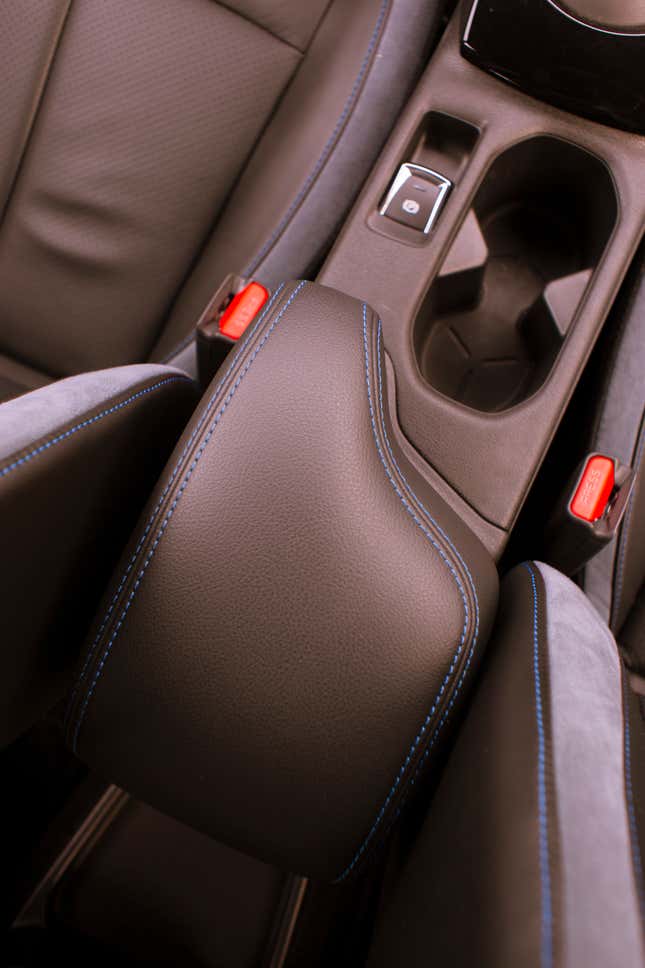
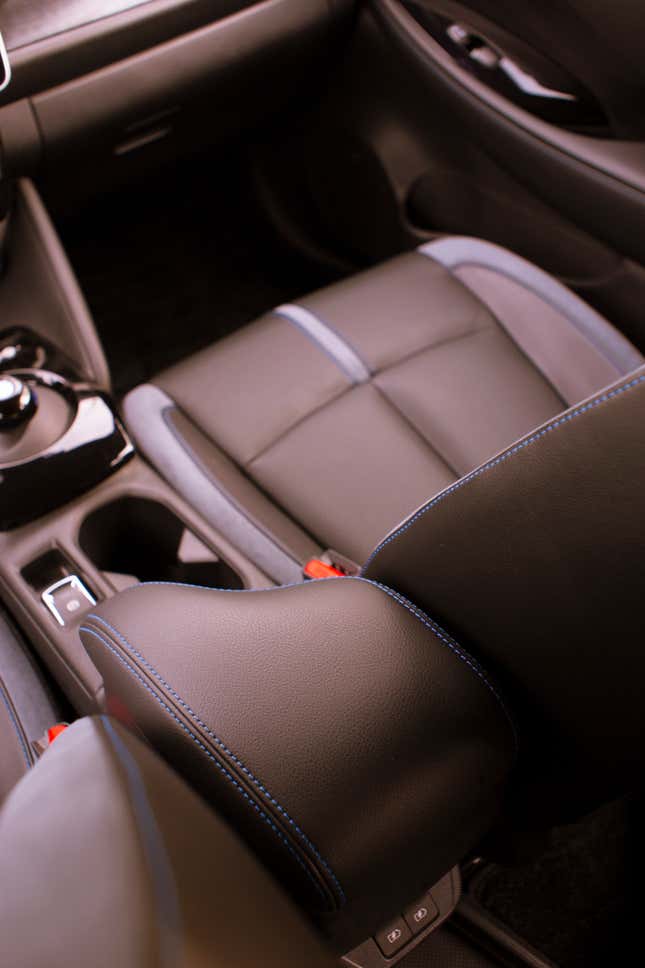
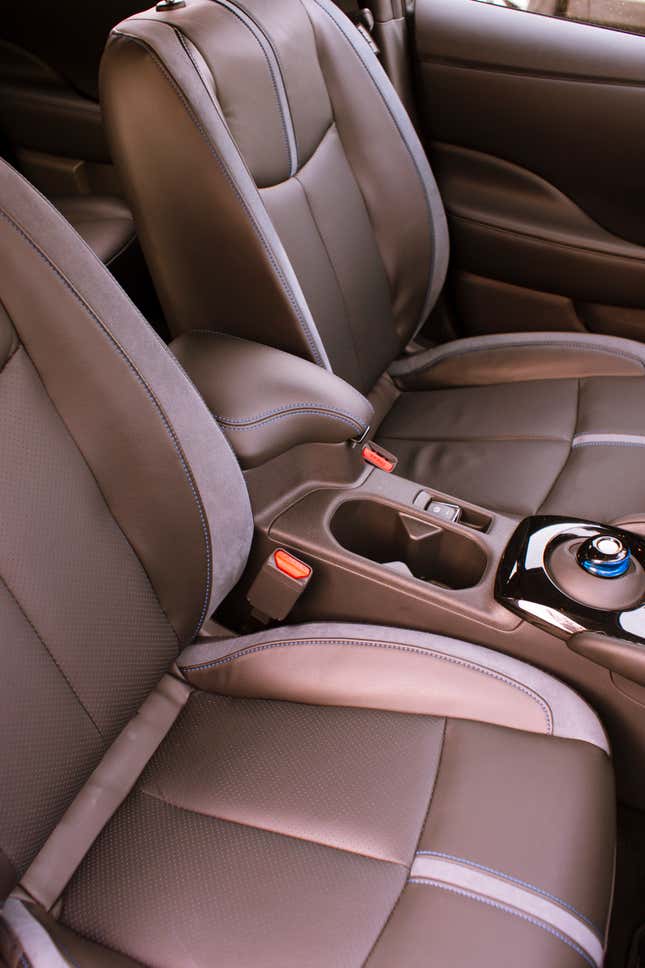
There’s an armrest for the driver, and then a sort of peanut-shaped indent on the other side where the passenger would rest their arm. You know, if the space hadn’t been given to a cupholder. A long drive in the Nissan Leaf is not greatly affected by its range, by its charging plug, but rather by the passenger getting stuck, uncomfortably armrest-less.
Oy! I feel so much better with that out of the way. Man, what a bad armrest. Alright, back to the rest of the car.
(Full Disclosure: Nissan lent me this Nissan Leaf with a full battery and the optional home-charging cable for a weekend for a couple hundred miles of driving up out of the city and into the Catskills. It’s the kind of trip that you normally do in a Subaru or some other crossover/wagon, and I wanted to see if an EV could do the yuppie journey just as well.)
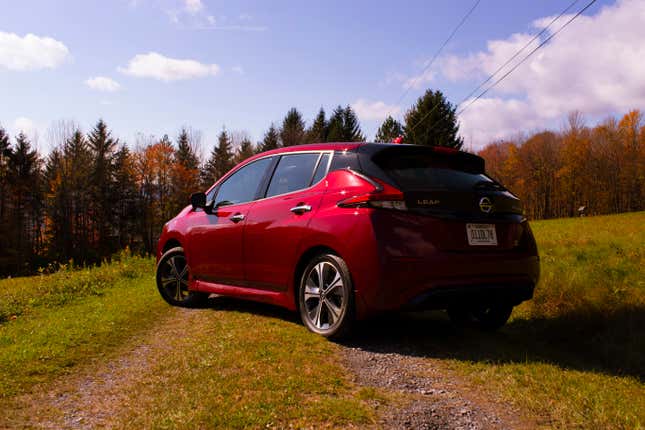
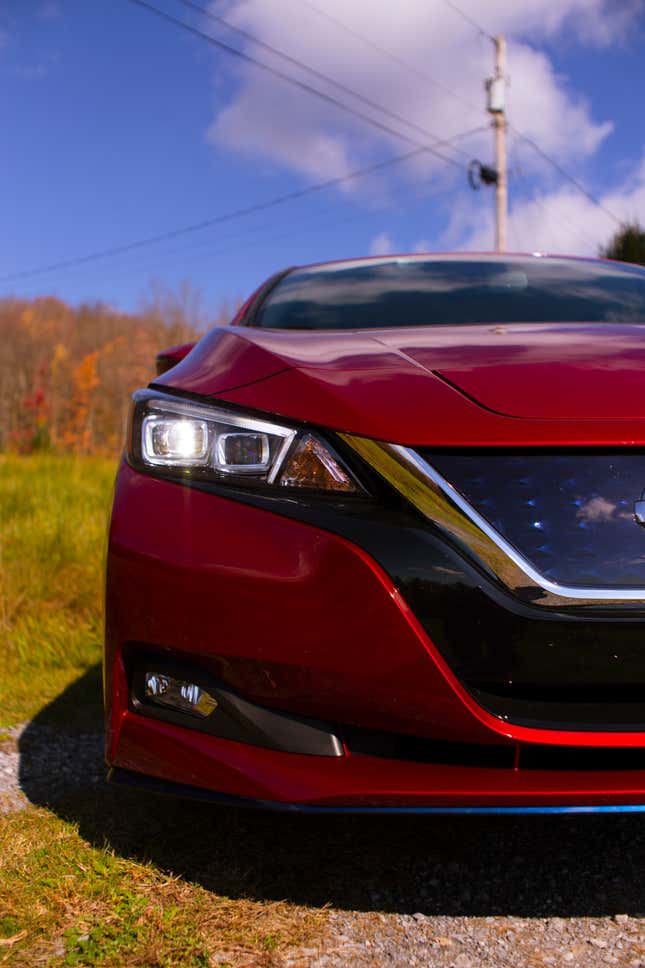
The Nissan Leaf Isn’t Just Affordable; It’s A Good Car
The Nissan Leaf is the most old-school electric car you can buy, probably because Nissan is the most established modern electric car manufacturer on the market, at least outside of GM. Both companies were developing and selling all-electric cars through a good chunk of the 1990s, though even a Chevy Bolt feels much more current, more futuristic than a Nissan Leaf.
That might be because there’s not a ton of connection between a modern Chevy Bolt and an original EV1 (you could easily argue there’s more of a connection from an EV1 to a Tesla), but there is a pretty clear thread that connects a Nissan Leaf back to, say, a Nissan Altra EV that you could get your hands on in 1998. Both of them use Lithium-Ion batteries. (Nissan started working on Li-ion literally a day after Sony announced the first commercial application of the technology and started collaborating together all the way back in 1992.)
Both of them also charge from the front of the car, with the Altra getting a cool paddle you stuck in the nose and the Leaf having a little pop-up vanity plate with its charging ports hiding behind it.
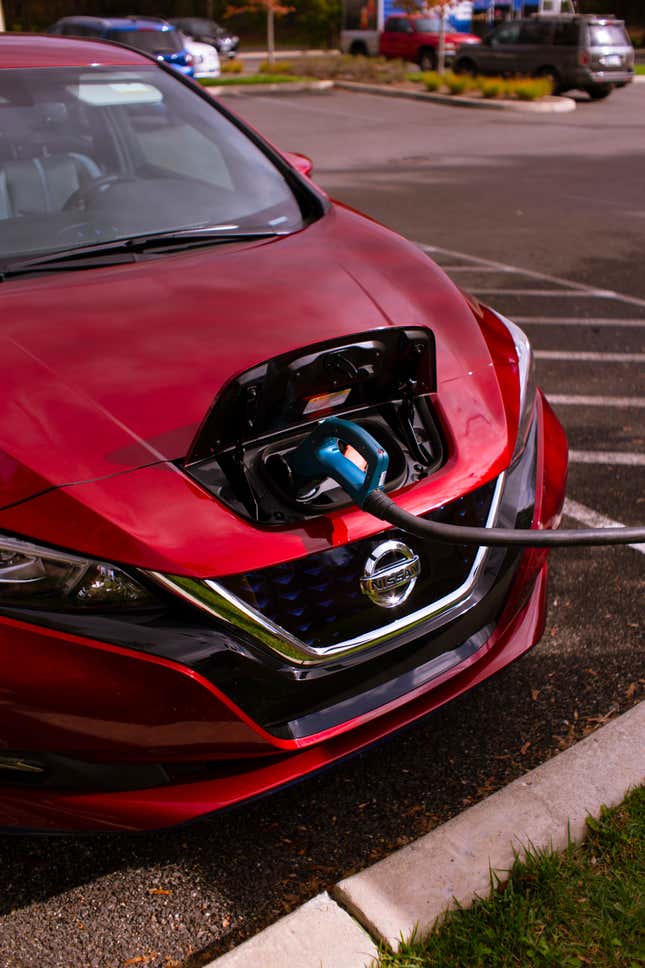
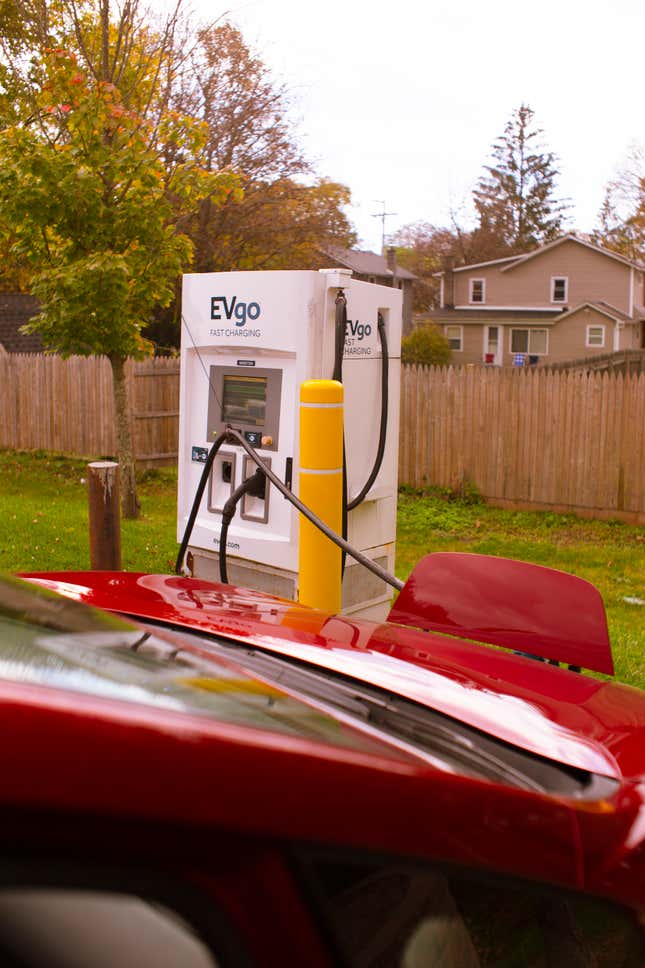
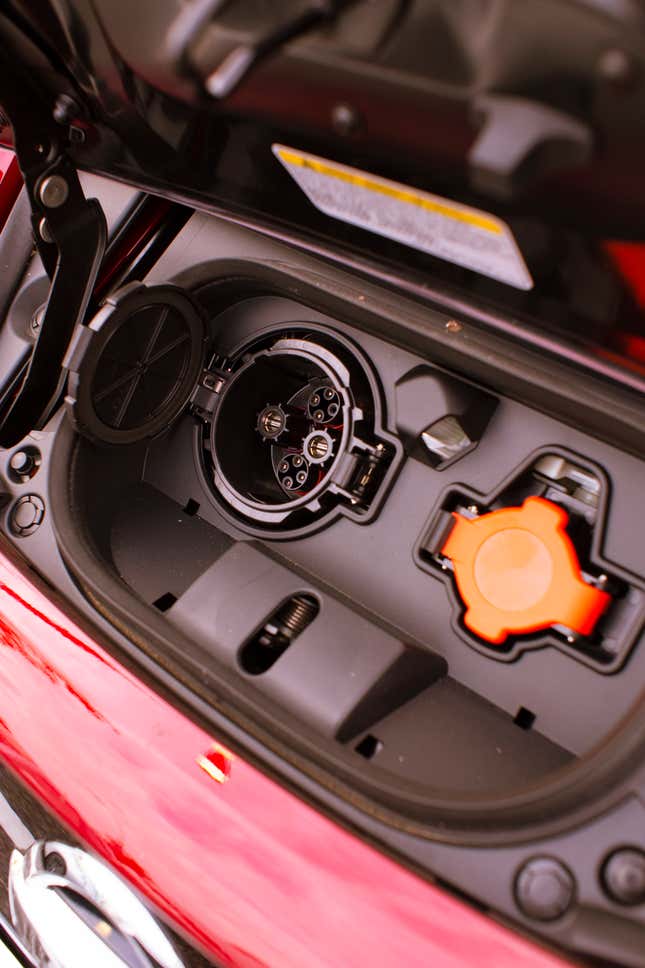
For whatever reason, just about every other EV you can buy today has the charging port about where you’d find the gas cap on a regular car: on the side at the back. This does feel somehow familiar, but it does mean that you have to back into every charging station you ever use. That’s, well ... that’s stupid. The nose idea is better. Nothing else to it.

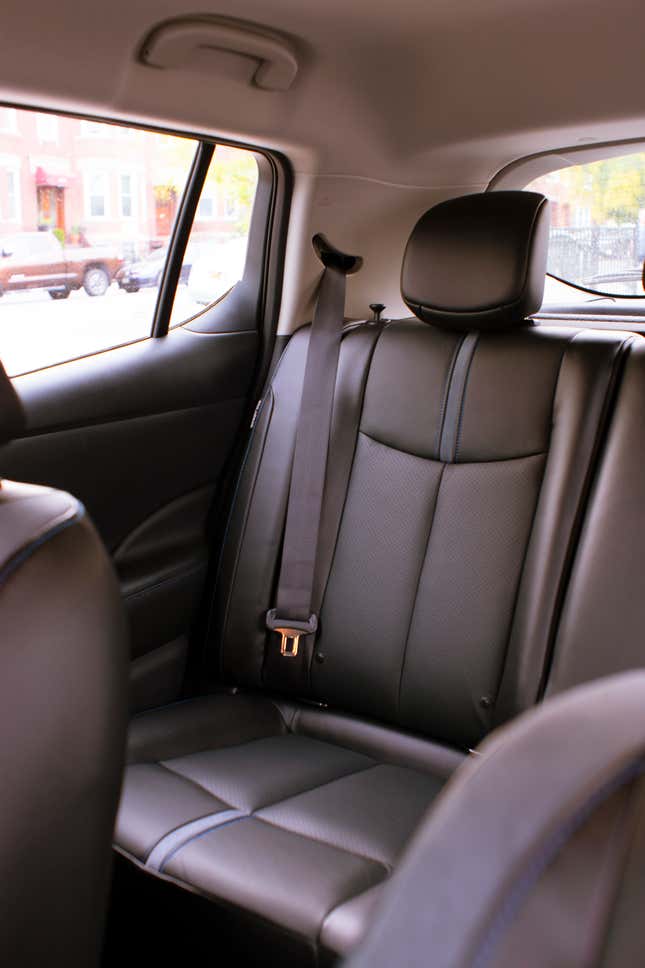
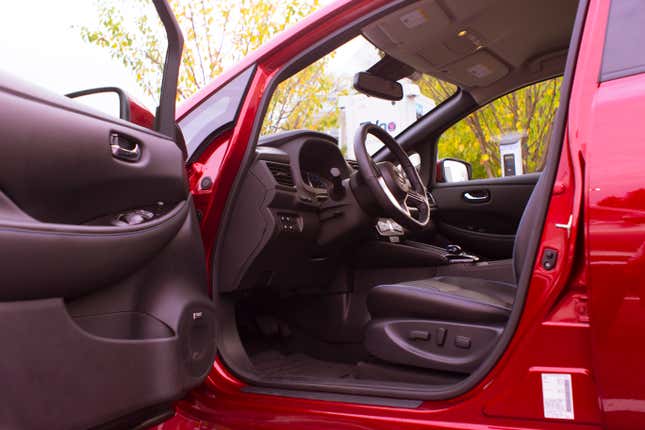
The Nissan Leaf’s Interior Is Astoundingly Plain
The other connecting thread is that while other EVs you can buy today are designed to feel futuristic inside, the Leaf is astoundingly plain. You can’t get it with a white interior. There is no full-length sunroof. There is no barebones dash like you get on a Tesla or Volkswagen.
Your radio, volume, air conditioning and heater controls are all simple buttons and knobs. You are not perpetually hunting through touchscreen menus, hoping your car’s driver-assist features make up for your distraction. Inside a Leaf, you’re just ... in a Nissan. Could be any one of them, really. A Prius has a more radical design.
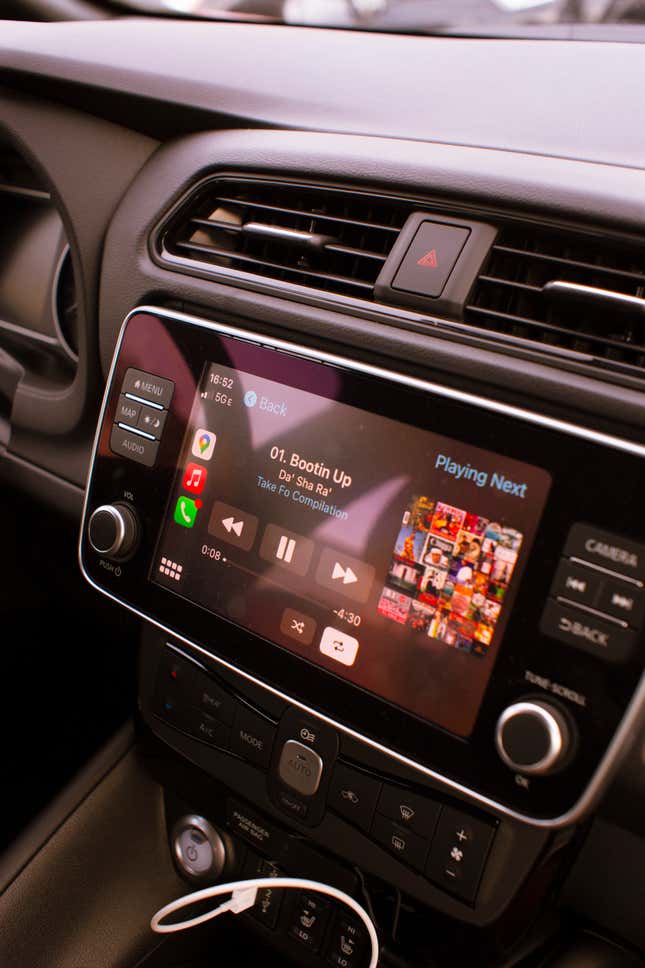
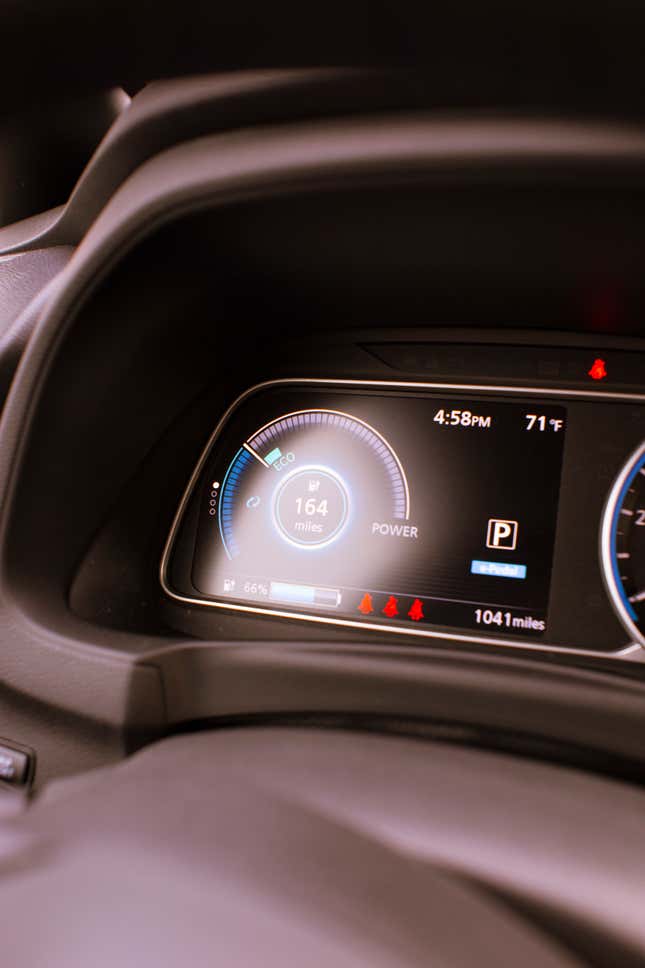

Charming as that is, it’s also a bit of a letdown. Sure, the Leaf is cheap compared to other EVs. Even the lowest-spec VW ID.4 will run you thousands more than a Leaf with the optional 60kWh big battery, up from the standard 40kWh. It just all feels a little bit wasted on you, though.
If you’re going to go through all of the trouble to buy and maintain an electric car (plotting your routes based on where there are available public charging stations, asking your friends if they don’t mind if you run an extension cord out of their basement while you stay overnight), you might as well get a car that tells you, “Hey! This might be inconvenient, but you’re living in a future ten years down the road for everyone else!”
There isn’t even a frunk. The Leaf isn’t fun n’ funky. It’s a Nissan.
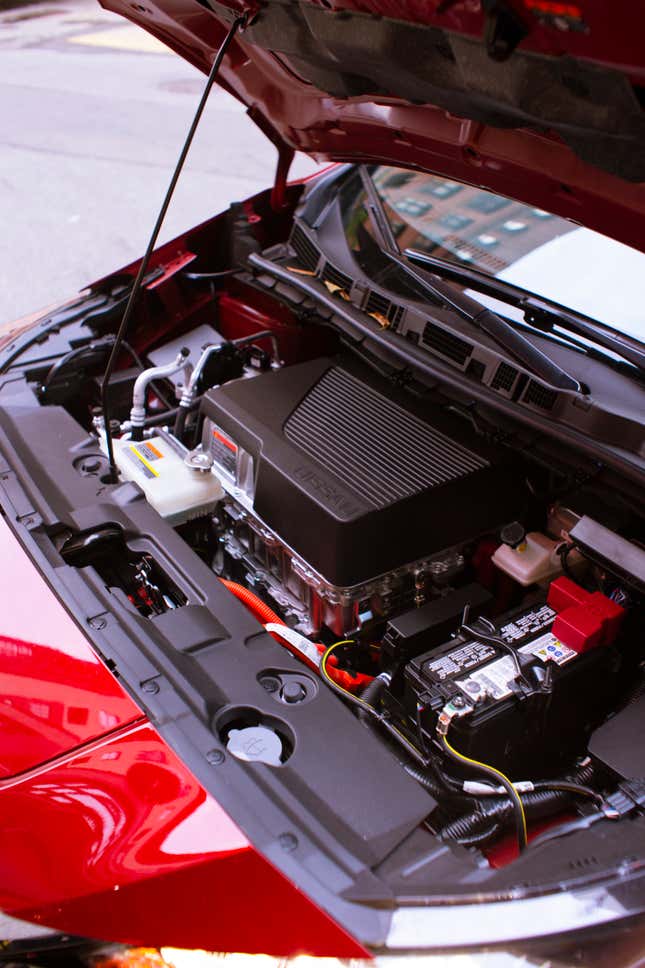
The Charging System Is Outdated, But Range Is More Than Enough To Negate It
These are all petty complaints, as I’m sure you’ve gathered by now. That’s because, fundamentally, the Leaf is a good car. I don’t know if I would say that the original Leaf, which scraped up 100 miles of range (according to Nissan — it was 73 miles according to the EPA), was a good car, but this one is.
I drove the 60kWh version, which is rated up to 220-odd miles of range. In one day I ran it from 100 to 9 percent over the course of 183 miles, passing fast-charger stations I didn’t need. Even when I pulled up to a new NYC-branded charger that didn’t work 180 miles into the day, I wasn’t bothered. I had more than enough range to get home. I could just go to a charger I’m familiar with the next day.
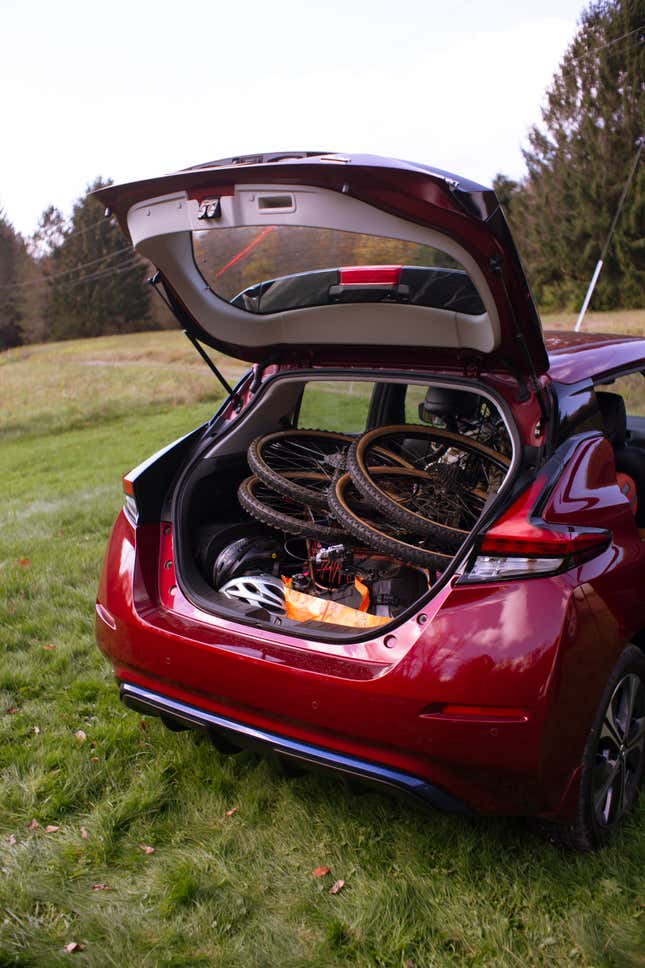
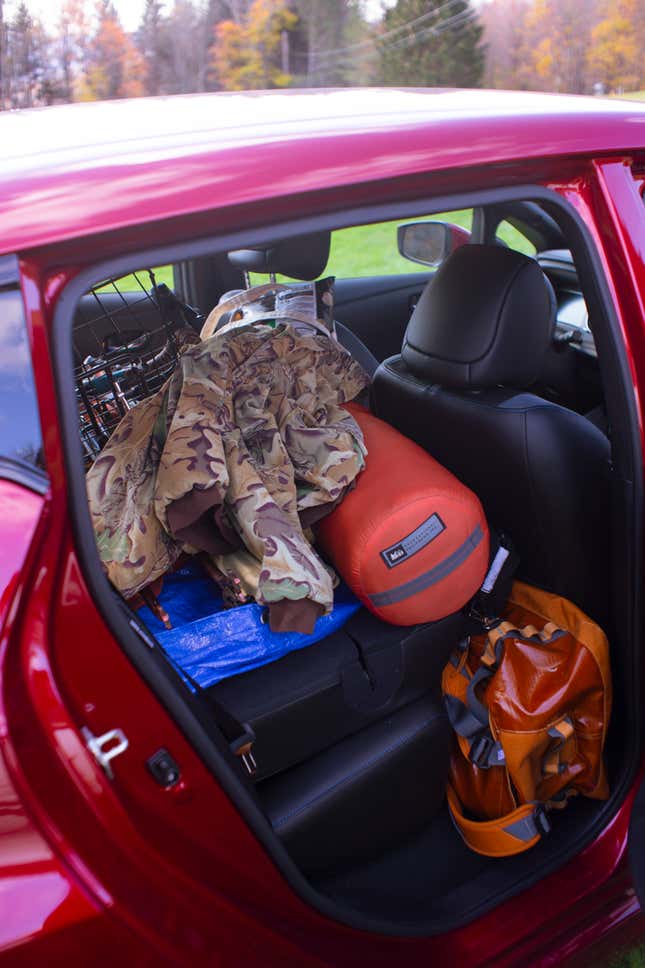
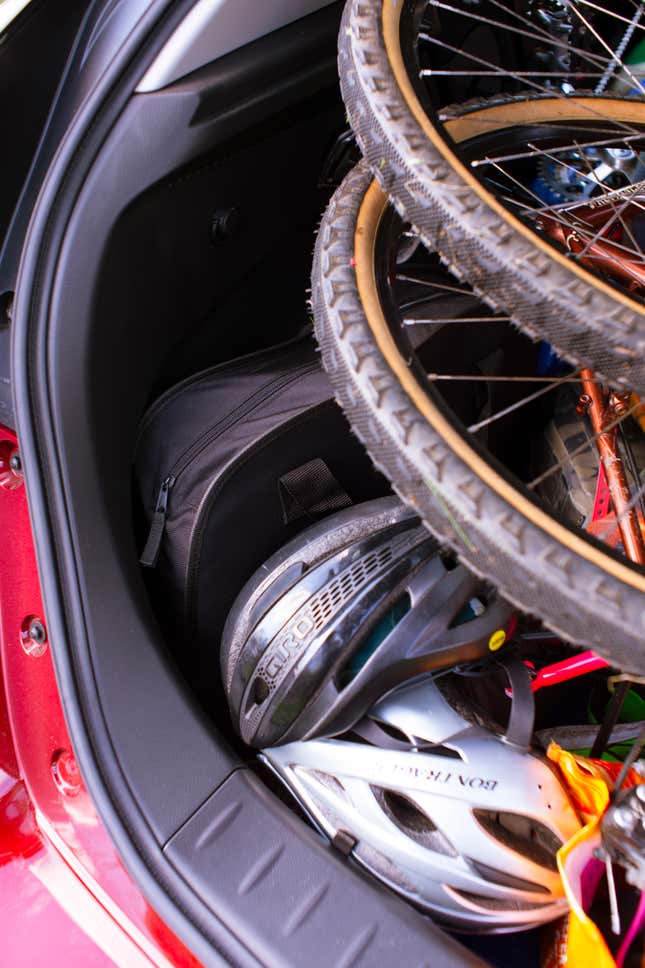
I didn’t even run into any problems with the fundamental structural difference between a Leaf and other EVs you can buy: the charging cable. New EVs pretty much all use the CCS/SAE plug standard, and they’re optimized to guzzle huge amounts of electricity at once.
VW ID.4s will happily gulp down hundreds of miles of range in half an hour or 45 minutes from a 150kW fast charger. Nissan Leafs still use the same kind of plug they did back in 2010: the sad-bro-sounding CHAdeMO. And you’ll probably wait 15 or even 30 minutes longer on a 50kW charger to get back up to about full.
The only thing is, with more than 200 miles of range in the Leaf, you don’t really have to fast-charge all that often. Three hours of highway driving is a long stretch, and I never had to charge up mid-way between point A and point B, even driving up into a relatively remote cabin in the Catskills for a bike trip. If I was driving from Billings to Bismarck, I’d be in rougher shape, but it’s not all that often I’m doing that drive.
It’s A Practical Car That Isn’t Constrained As An EV
Speaking of that bike trip, the Leaf didn’t have any trouble swallowing two bikes with racks, baskets, and pedals attached. The back seats didn’t fold flat, which was annoying, but there was still plenty of room for two people’s stuff and their bikes.
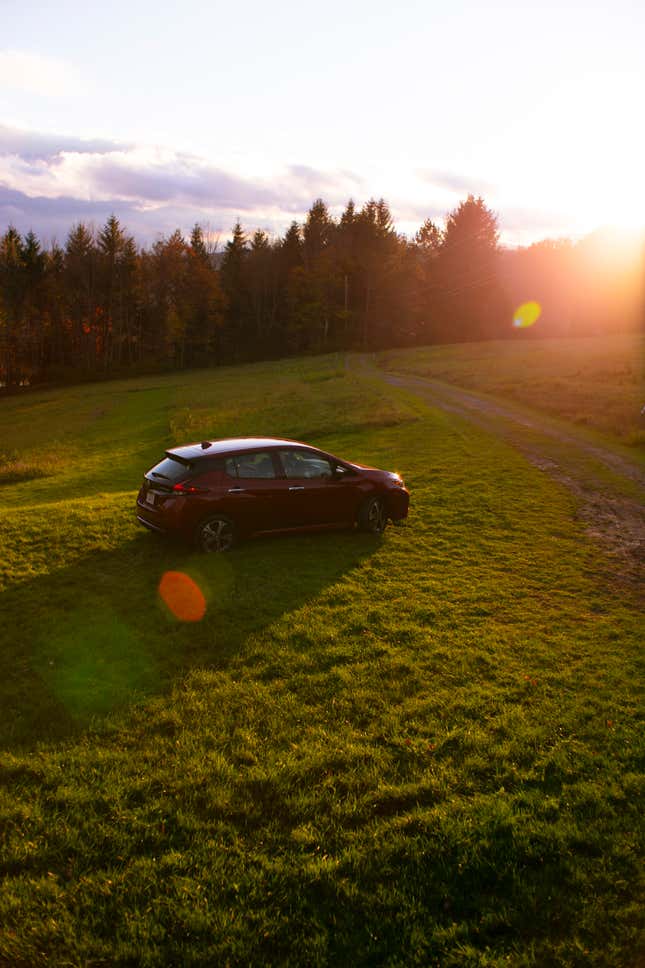
The Leaf is an easy car to live with. Even though its design and layout are the most old-school thing on the EV market, it’s perfectly modern in that it doesn’t ask much of you. It might not look as daring as a Tesla or a VW, but there is something trusty to it. A sense that Nissan has been doing this for a long time and that it’s not going to burst into flame like a Hyundai or Chevy.
It’s not going to fall apart in the rain like a Tesla. I just wish it had a better armrest.